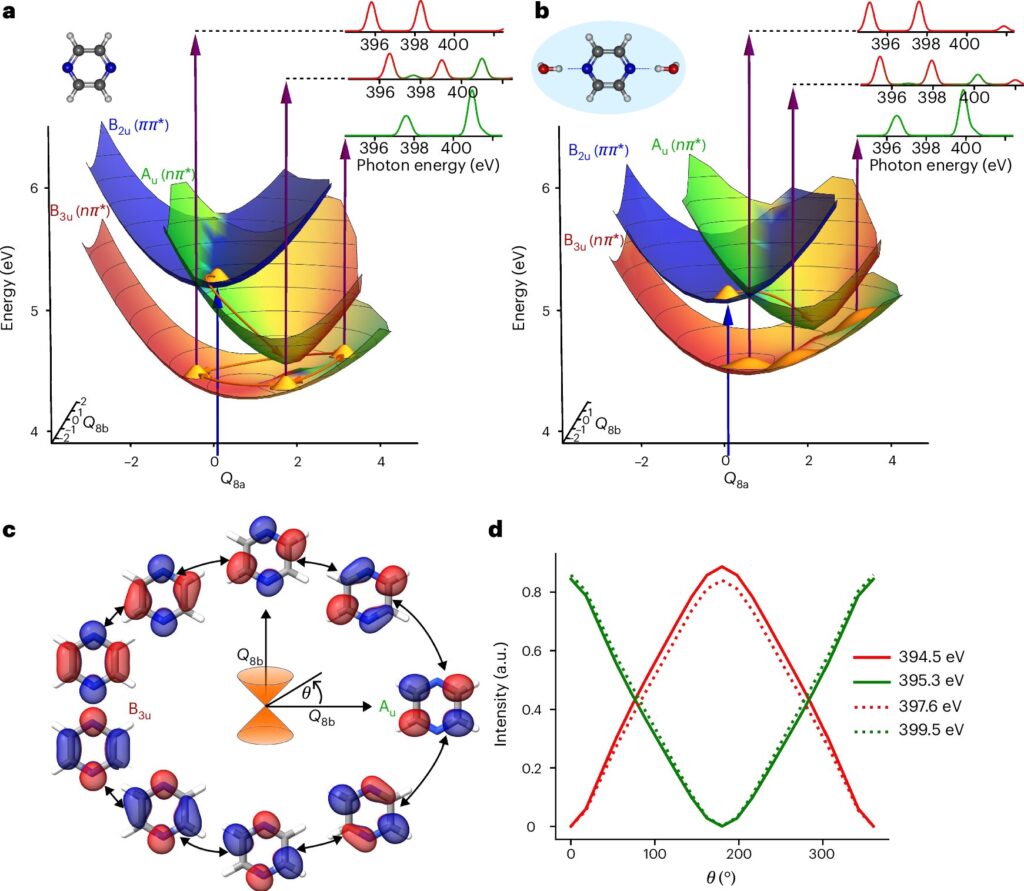An international research team from Switzerland, Denmark, Germany, Croatia, Norway, Spain and Japan has made a significant breakthrough in understanding ultrafast electronic dynamics, revealing the profound impact of aqueous solvation on electronic rearrangement processes in pyrazine.
Using advanced X-ray spectroscopy, the team observed that electronic relaxation via conical intersections, a fundamental pathway in excited-state molecular dynamics, is entirely suppressed in aqueous solution, dephasing within an astonishingly short timescale of less than 40 femtoseconds (fs), one fs is the millionth of a billionth of a second.
Details of their findings were published in Nature Physics.
“By leveraging nitrogen K-edge transient absorption spectroscopy, we were able to directly capture oscillatory electronic population flow in gas-phase pyrazine—resolving a long-standing controversy in the field,” said Zhong Yin, an associate professor at Tohoku University and a co-first- and corresponding author of the study.
“Our findings demonstrate that while gas-phase pyrazine exhibits a cyclic electronic rearrangement, this process is rapidly dephased in water, indicating that solvation plays a crucial role in electronic motion at the femtosecond timescale.”
The researchers utilized time-resolved X-ray absorption spectroscopy (TR-XAS) at both the carbon and nitrogen K-edges to track excited-state dynamics with element-specific resolution. The study compared gas-phase pyrazine with a 5 M aqueous solution, revealing stark contrasts in their ultrafast behavior:
In the gas phase, the team observed a clear cyclic electronic population transfer at the nitrogen K-edge, where transient bands oscillated in spectral intensity within the first 150 fs with a period of around 80 fs.
“Not only was it exciting that we were able to observe rich dynamics at the nitrogen K-edge in gas phase, but also the fact that our theory collaborators were able to establish a link between the excited state population dynamics and a circular rearrangement of the electronic structure around the conical intersection,” said Yi-Ping Chang, who was the Ph.D. student and co-first-author of the work.
In the aqueous phase, this coherent electronic motion was entirely suppressed. No quantum beats were observed in key spectral regions of the nitrogen K-edge, highlighting the rapid loss of electronic coherence in water.
This research confirms that conical intersections generate observable electronic dynamics, but also underscores how aqueous solvation rapidly disrupts these processes.
The results have broad implications for attosecond spectroscopy, quantum biology, and attochemistry, where solvent interactions must be accounted for when modeling excited-state behavior.
“Our study provides a crucial step toward understanding how electronic dynamics evolve in realistic environments, such as biological systems and solution-phase chemistry,” added Yin.
“The suppression of cyclic electronic rearrangement in water challenges conventional models and paves the way for further investigations into solvent-induced electronic decoherence.”


